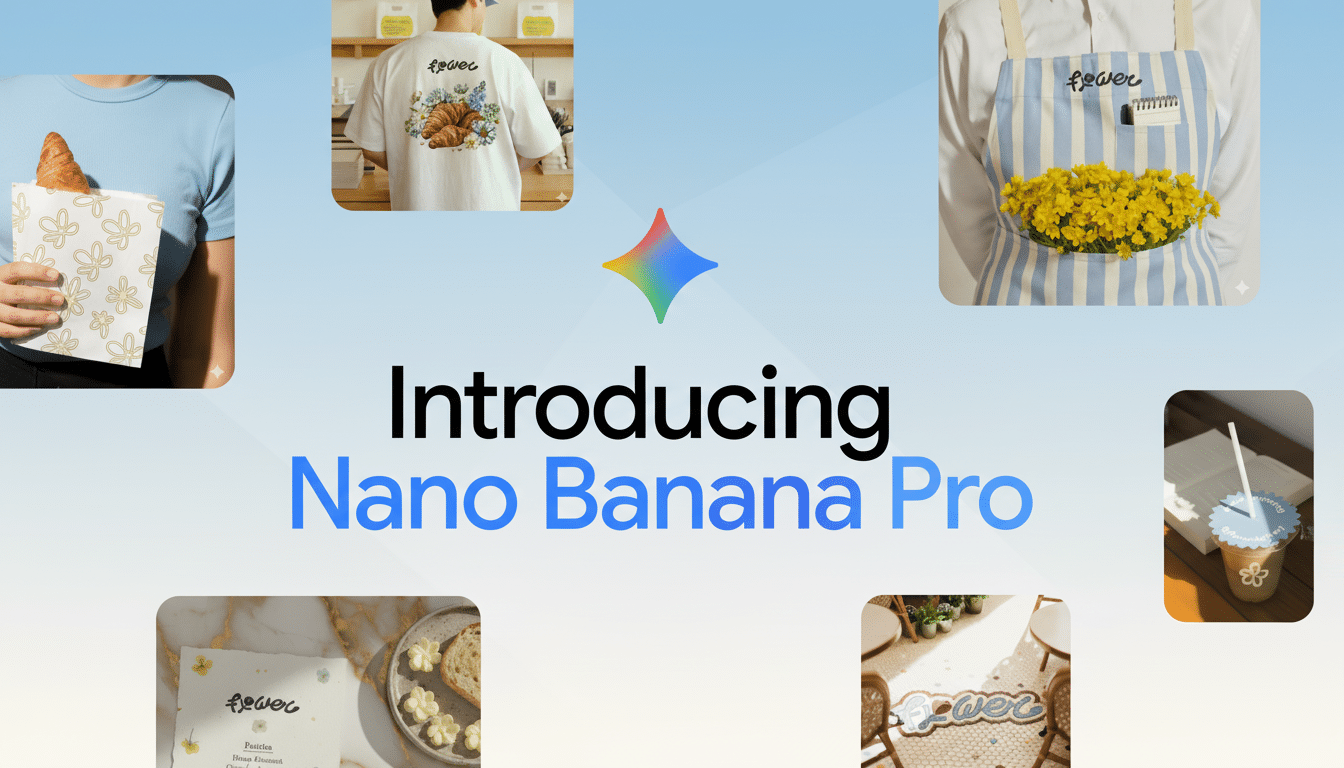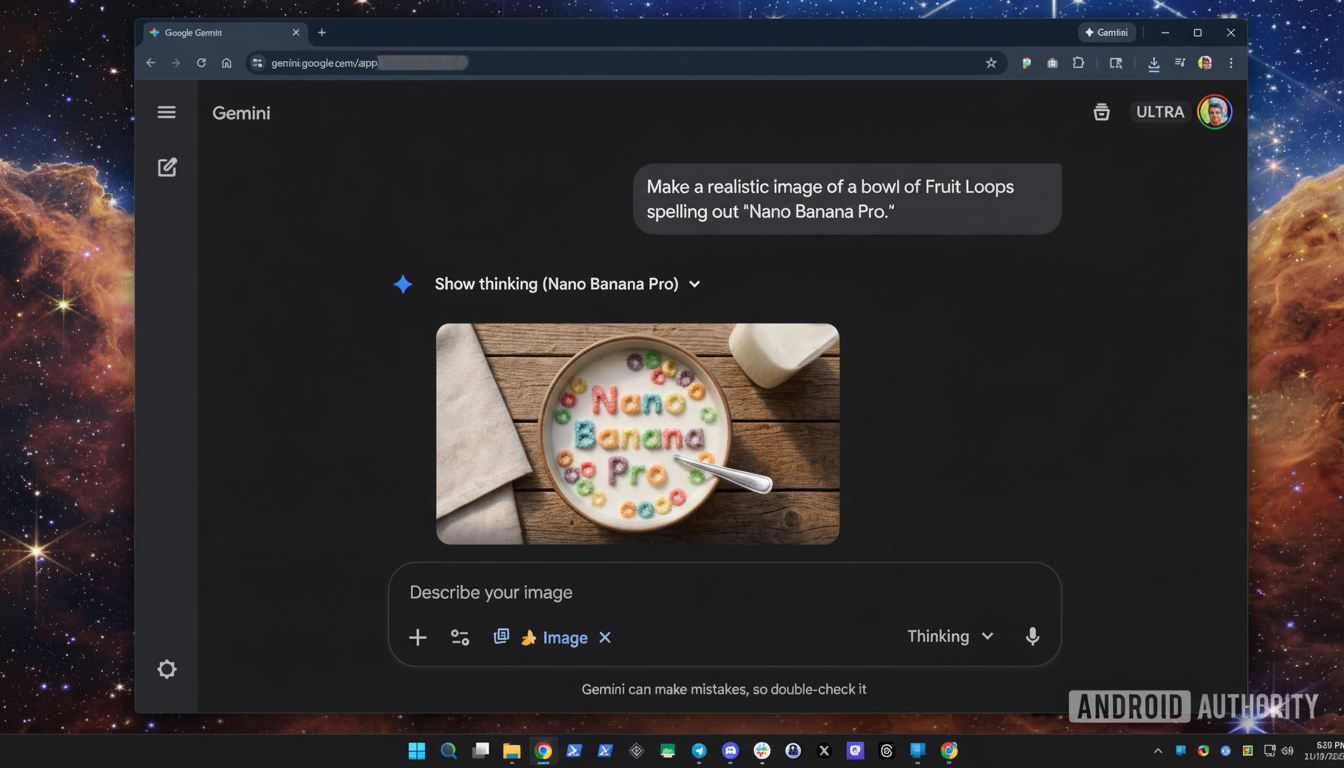Google has released Nano Banana Pro, the second version of its Brewery-based image generation model.
Designed for professional workflows, the upgrade includes improved text sharpness and rendering; increased output resolution (up to 4K); web-aware prompting; and fine-tuned creative control, enabling more predictable synthetic image generation that is production-ready.
- What Nano Banana Pro Adds on Top of the Original Model
- More Resolution, More Control With Editing
- Pricing and performance trade-offs for higher quality
- Asset consistency and compositing for multi-shot sets
- Availability across Google products and subscription tiers
- Watermarking and content credentials for provenance
- Competitive landscape and what to watch as rollouts begin

What Nano Banana Pro Adds on Top of the Original Model
Deep down, Nano Banana Pro is really all about fidelity and control, with fewer rough edges in the generated text, and it handles multiple styles, fonts, and languages. The company says this yields a model that significantly improves on previous text-in-image generation. It can even roam the web during a session, which allows us to imagine prompts like “search for a Provençal ratatouille recipe and create study flashcards,” so that retrieval pairs with generation for outputs with firmer footing.
Built on the foundation of Gemini 3, workflows within the model support in-place iterations, nudging camera angles, tweaking depth of field, playing with lighting, and applying color grading without restarting from square one. In practical terms, that moves it closer to a virtual studio, in which one idea produces dozens of art-directed iterations.
More Resolution, More Control With Editing
Where the original Nano Banana capped at 1024×1024 output, Nano Banana Pro generates 1080p and 2K images by default and scales to 4K. For teams who need crisp product shots for social campaigns or pitch visuals, those extra pixels matter: fine print is legible, surfaces retain texture detail, and assets can be repurposed across platforms without visibly degrading quality.
The model’s editing stack is tailored for repeatability. There are also controls for focus, exposure, and composition that can cut out much of the trial-and-error wasted time in creative pipelines. Consider the task of pushing around a key light to minimize specular highlights on a wine bottle’s high-gloss finish, or changing focal planes in order to make a logo look razor-sharp — things that used to necessitate re-prompts or hours of post-processing work.
Pricing and performance trade-offs for higher quality
Quality comes with a cost. Google says Nano Banana Pro is slower and more expensive than its predecessor. The original model was sold at $0.039 per 1024px image; Nano Banana Pro goes for $0.139 per 1080p/2K image and $0.24 for 4K, by way of example (for comparison: many consumer-facing generators still ship in 1024×1024 dimensions to keep compute costs down — the pcilt810a on GPT-3 stands other than the paywall because this is a restriction with a custom telling from OpenAI). For professional use cases — for packaging comps or out-of-home mockups, maybe even keynote slides — many teams choose to incur the premium rather than to upsample and manually clean up.
The math is simple: higher per-round cost, fewer rounds. Even if the model’s text accuracy and lighting controls shave a single revision cycle (or even just one or two rounds) off of that eight-day process, the total cost for an approved asset plummets — something creative ops leaders increasingly track alongside impressions and CTR.
Asset consistency and compositing for multi-shot sets
Google emphasizes new features for multi-shot consistency and compositing. Nano Banana Pro can create up to six quality shots from a cohesive set, meld as many as 14 objects into the same cut, and retain likeness on up to five people. It’s also great for storyboards, episodic marketing, and catalog work in which the same model, product, or mascot has to appear consistent in different scenes.

Examples from the real world: a retailer rolls out a six-image spring lookbook with the same model in multiple places, without wandering facial features, and composed clothes are replaced with local signs, accurate text.
Availability across Google products and subscription tiers
Nano Banana Pro is now being widely deployed. The Gemini app will launch the new image-generation model by default; however, free-tier users will have a restricted number of Pro renders before falling back to the old Nano Banana. Google’s AI Plus, Pro, and Ultra members are also given increased generation limits, and the model is available inside Notebook LM for research-focused use cases.
On the Search menu, Pro and Ultra subscribers in the U.S. can click into Nano Banana Pro via AI mode. Ultra subscribers are also able to access the artwork in Flow, Google’s video tool, and use those image assets that correspond with storyboard frames or thumbnails. Workspace users can create within Google Slides and Vids, while developers integrate the model via Gemini API, Google AI Studio, and the upcoming Antigravity IDE.
Watermarking and content credentials for provenance
Google is baking SynthID into the Gemini app experience to aid in provenance and detection. Users can upload an image, and the system indicates whether the image was generated or modified by Google’s image models. The company also announced it will be adding support for C2PA content credentials, an industry standard that’s backed by companies like Adobe and big media partners, to further improve end-to-end verification across platforms.
The provenance push converges with recommendations from industry groups that also advocate for clear labeling of synthetic media, especially as image generators become more adept at rendering photorealistic text and lifelike faces — areas that have traditionally exposed models to misuse and misunderstanding.
Competitive landscape and what to watch as rollouts begin
Nano Banana Pro places Google in competition with established players like Midjourney and Stability AI’s SDXL, and with big-platform options that stress text accuracy. Higher native resolution and web-grounded generation appeal to brand and agency teams that juggle product copy, localized versions, and tight turnarounds — they will eat it up.
Up next: latency under load, guardrails on web-based prompts, and how well the model maintains a consistent identity across longer sequences. If Google is right, in production the Nano Banana Pro might reduce the distance between idea and campaign-ready assets — less “prompt magic,” more reliable craft.

